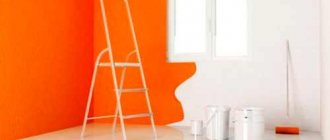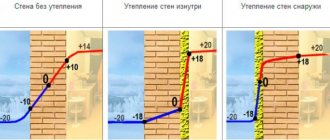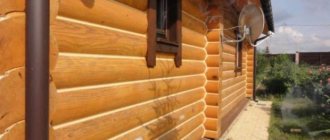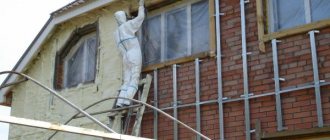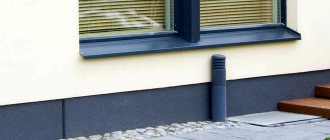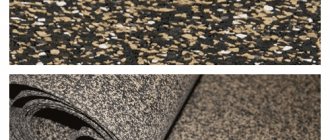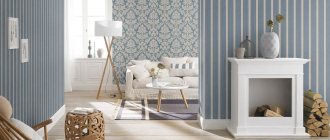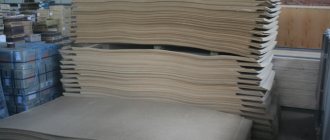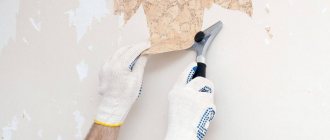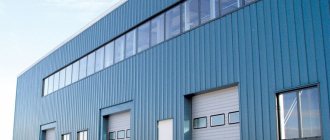Cladding walls with fiberboard panels - 3 ways
The use of fiberboard panels for walls is one of the most popular methods of finishing a vertical surface today. Natural wood retains heat perfectly and has soundproofing properties. During the cold season, the product does not allow the walls to cool down and maintains an optimal level of humidity.
Wood fiber panels are the best material for sheathing. As a rule, flat panels are used for cladding vertical surfaces.
Where are they used?
The use of laminated fibreboards is determined by the characteristics of the panel. They have excellent soundproofing properties and for this reason it is often practiced in those rooms where it is necessary to ensure a high level of sound insulation - radio broadcast rooms or recording studios. Fiberboard has demonstrated its effectiveness in office premises, as well as educational institutions, where it ideally plays the role of a sound insulator. A smooth and neat panel surface with the already applied texture of marble, granite, wood or other material is perfect for interior design and in combination with other materials, and when finishing only fiberboard. This mostly applies to walls and floors with unsatisfactory material quality.
. The specifics of using slabs according to technical parameters have many nuances:
- Soft slabs have a high degree of porosity, and therefore low density. Their use is appropriate for rear furniture walls and partitions.
- Semi-solid materials are much stronger, but they are made only for the back walls of furniture, for example, wardrobes.
- Super hard and firm. This type of fiberboard has the maximum degree of strength. In this regard, arches, doors, or laid on the floor are made from it.
- Finishing and insulating materials are usually laminated. A texture is applied to their surface, and such panels can be used as partitions, doors, and even the base material for creating pieces of furniture.
Wood-fiber panels with some kind of coating on one or both sides are also promising and never lose demand. They are suitable for use in finishing works, when creating pieces of furniture, creating air arches and partitions, as well as suspended composite ceilings. Laminated wood fiber panels will definitely be needed for cladding and repair work, but the most important thing is the right choice and knowledge of cutting/laying methods. From the following video you will learn how to properly lay fiberboard on the floor surface.
Overview of types and sizes
The market offers a wide variety of products for decorating a room. Fiberboard has advantages that make the material stand out among its competitors . Using panels, you can get a coating that imitates other materials, choose colors and even texture. Fiberboard is a safe type of cladding that does not harm human health and the environment. Manufacturers often use the dry method to make panels.
It is impossible not to highlight the ease of installation, since you can work with the material yourself without outside help. There are different installation options, each of them has its own characteristics. As for the cost, the panels are offered at an affordable price, which has contributed to the increased demand for the material. Thanks to fiberboard, you can insulate the room and also obtain sound insulation. If you choose the right wood fiber panels that meet high requirements and standards, their service life can reach 10 years, and this is not a short period.
To make the use of cladding possible in a room with high humidity, it is necessary to select a special type coated with a protective impregnation. It is also important to observe storage conditions so that the material does not deform, which is why products are often attached to the sheathing using self-tapping screws.
Stacked wall panels are one of the most popular types of fiberboard. With this material, work is carried out very quickly; you can choose a decor option from a wide range. It is important to pay attention to the dimensions of such boards: the thickness can be 6–25 mm, and the length reaches 4 m, the width range is 15–30 cm. Thanks to the choice of such parameters, you can complete finishing of any complexity. A locking connection is used for fastening. On the market you can find a product with double-sided coating, so the protective functions are ensured.
Sheet moisture-resistant panels are presented in large format, so they can be used in large rooms. This type of finish is often chosen to decorate a kitchen backsplash. This material is attached with precise edge adjustments.
The tiled variety of fiberboard is a finishing material with parameters of 300X300, 150X600 and 980X980 mm. Docking is used for fixation, but you can find panels with a locking connection. If you need decorative design of a room with interesting combinations, you can safely choose slabs that fit into the bedroom, living room and other parts of the house.
The laminated panel is offered in sizes 2850X2070X3.0 mm. Such sheets have a protective film, which is created from melamine or acrylic resin. This coating is decorative and is offered in a variety of colors.
The adhesive composition should be selected taking into account the properties of the surfaces that need to be joined.
What to choose from?
Laminated fiberboard appeared on the construction markets relatively recently. A huge variety of fiberboard wall panels is divided into three types:
- Lath type panels (“under the lining”), 10-30 cm wide, 2.5-6 m long and 8 to 25 mm thick, are equipped with a tongue-and-groove system, which allows you to mount the panels on the wall easily and quickly. Such panels are fastened using special clamps or brackets;
- Tiled panels are distinguished by a wide variety of fiberboard sheet sizes (30×30 cm, 30×60 cm, 15×60 cm, 49×98 cm, 98×98 cm), which makes it possible to create incredible designs on the walls, combining panels of different sizes and colors. Tiled fiberboard panels for walls are mounted in the same way as typesetting ones;
- The sheets look like the usual hardboard sheets. Sheet panels have a wide range of sizes (49×130 cm, 98×128 cm, 98×260 cm, 100×130 cm, 100×200 cm, 100×260 cm, 122×244 cm, 260×490 cm) and a variety of colors , from plain to 3D. Sheet panels are fastened in different ways, depending on the condition of the walls.
In addition, laminated panels are divided into moisture-resistant and non-moisture-resistant; this aspect should be taken into account when choosing a finishing material. say, kitchen or bathroom.
What are fiberboards attached to?
Before you figure out what to do with an uneven wall and panels, you need to understand what your mounting options are in general. DV panels can be fixed to the wall in the following ways:
- Using glue;
- On an installed wooden frame;
- Directly to the wall using self-tapping screws.
From the listed methods, it is obvious that the easiest way is to glue the sheets directly to the wall, but in this case the wall must be flat. If the wall is not prepared, the fiberboard will not adhere evenly to the surface and, of course, will fall off over time. This means that in order to make working with fiberboard easier, you will have to worry about leveling the walls. But is this always necessary?
Installation technology
Fiberboard wall cladding is done in various ways.
Installation with glue
This method can only be used if there is a perfectly level base. This process is best performed in rooms with constant humidity.
- The surface level is checked. If the deviation is more than 2 mm per 2 m, then finishing puttying is carried out.
- Priming is being carried out. For this purpose, a composition with deep penetration is used. It is recommended to apply at least 2 layers.
Particular attention is paid to joining the edges: if overlays are not used, then the fit must be extremely accurate.
For nails or screws
This method is more reliable even in difficult areas; placing slabs on glue is not always durable.
- On a wooden base, fixation can be done directly. To do this, the elements are first marked and adjusted to the required size.
- If the surface is concrete or brick, then the parts are pre-drilled at the required points. Next, the panel is installed in its place, after which the markings for the screws are transferred to the wall. Using a drill and a suitable drill bit, holes are created for the dowels. The fragment is placed along the marks and secured.
A significant problem that may arise is visible fixation points. That is why they should be located in the least visible places or decorated.
On the sheathing
Internal work on installing fiberboard on the frame does not require leveling the walls. This design is erected if it is necessary to create a partition. The space between the racks is suitable for laying insulation and communications.
- The base is cleaned of all excess, cracks and crevices are covered, and impregnated with antiseptic compounds.
- To sheathe surfaces with panels, it is better to use wooden beams for sheathing. It must be thoroughly dried and covered with protective solutions.
- The walls are marked, the curvature and the need for alignment are determined. Lines are drawn along which the racks will be placed. Take into account that they should be placed perpendicular to the decorative cladding.
- The first frame elements are mounted in the corners. To do this, they and the base are pre-drilled. Fixation occurs according to the level. If required, a spacer is used.
- A cord is stretched between the parts, serving as a guide for the remaining racks.
- The fiberboard is attached with self-tapping screws; if there is a locking connection, it is better to use clamps. This will ensure security and hide the fixation points.
- The set of panels starts from the corner, unless otherwise provided by the design plan. The first element is fixed at both edges. When installing, you must use a level.
- The remaining fragments are laid according to the same scheme.
Cladding walls with fiberboard panels - how to do it
When the type of panels has been selected and their purpose has been taken into account, finishing can begin. First, the fiberboard must adapt to the microclimate of the room - so it is allowed to lie in the room where it will be installed for several days. This prevents deformation of the material.
The wall panel is fixed to the surface with clamps, mastic, and nails. It's better to install a sheathing. Although glue is suitable for smooth walls.
Main cladding methods:
- Fixing with locks on the panels themselves is a popular method. During manufacturing, the sheets are equipped with fixing elements at the ends and sides. This method of attaching the trim speeds up assembly and installation and does not require much effort. In this case, the elements are securely attached to each other; the joints do not require additional treatment against corrosion.
- Frame installation is also in demand. The panels are fastened with nails. Installation begins from the corner, then the panels are fastened to each other.
- Mastic or adhesive composition is the easiest installation with a perfectly level base. The glue is applied to the walls with a notched trowel, the layer thickness is several millimeters. The sheets are pressed tightly to the surface.
Features of HDF production
The raw material for the production of HDF, or laminated hardboard, is wood fiber. It is obtained from waste obtained during timber processing. Substances that increase moisture resistance (rosin, paraffin) and a binding component in the form of formaldehyde resin are added to the fiber. In the manufacture of superhard slabs, pectol is also used, which increases the strength of the material by 20–30%. it is a by-product obtained from the processing of tall oil.
A carpet is formed from the prepared mass, which is subjected to hot pressing, drying and cutting into formats. The result is ordinary fiberboard sheets. They are then lined with thermoactive polymer films. They can be plain or imitate natural materials: marble, granite, veneer of various types of wood.
Attention! Do not confuse laminated fiberboard with laminated and veneered fiberboards. Laminated sheets are covered with tarred decorative paper, while veneered sheets are covered with natural veneer.
Types of glue
There are several types of glue, the actions of each of them are aimed at ensuring that wall panels for interior decoration fit as tightly as possible to the walls. From the list below you can familiarize yourself with the types of this glue.
Compounds for MDF stickers
This type of glue has a significant advantage - versatility. This glue can be applied to stone, metal, wooden products and others . This glue contains the following substances: Titanium, Moment and others.
A special series containing liquid nails
Experts have developed a special series of glue that is ideal for construction work and gluing MDF even on a concrete wall. The glue can be used not only by professionals, but also by amateurs. In addition, experts have invented an addition to glue: a construction gun, which is very convenient to use and greatly simplifies working with glue.
The composition includes the following substances: Installation, Liquid Nails, Macroflex and others.
The presented components are distinguished by super-strong fixation and durability. Beginning builders are recommended to use glue from the “Liquid Nails” series in their work. They are perfect for mounting your panels.
This material has a fairly wide range of advantages. The adhesion of the two products is high-quality and durable.
Using glue is very easy and does not require special skills; the glue is used very sparingly during work, due to which it can be applied in thin layers and eliminate any defects.
Fastening sheets to walls
Depending on the condition of the walls, finishing with laminated panels can be done in several ways:
- For adhesive compositions, if the wall is perfectly flat, there are no large changes in temperature and humidity in the room, and the panels themselves are not too thick;
- Using self-tapping screws directly to the wall;
- Using self-tapping screws, screwing them to the sheathing, wooden or plastic;
- Clamps (plastic or metal) to the sheathing.
How to mount fiberboard wall panels is something everyone decides for themselves. If you decide to mount fiberboard directly on the wall, you will have to first level and prime the walls. Starting from the corner, aligned with a plumb line, glue the first sheet, then lubricate the next one with glue, snap it into the lock first and also glue it to the wall. Don't want to mess around with glue? Use nails or screws, but remember that the heads will be visible. You can beat this drawback and attach the panels using nails with decorative heads.
Fiberboard is directly attached to walls made of wood and sip panels. On brick and concrete walls, you will first have to apply markings, drill holes and drive plugs into which self-tapping screws are then screwed in or nails are driven in to secure the panels.
But most often you have to build a sheathing and only then attach the panels. In this way, you can level even the most hopeless wall, losing a few centimeters of space and gaining the opportunity to lay communications, sound and heat insulation materials.
The sheathing is mounted from wood or a special plastic profile. Fastening to the sheathing is carried out using glue, self-tapping screws or clamps (special fasteners that are purchased complete with the panels). The sheathing is installed strictly according to the level and plumb, in increments of no more than 30 cm. After installing the sheathing, attach the sheets in any way and install the moldings.
The video shows an example of installing fiberboard sheets on a wall in a bathroom.
Laminated fiberboard opens up truly limitless possibilities for imagination and design delights, while allowing significant savings on finishing work.
Immediately after its appearance on the construction market, sheet wall panels gained well-deserved popularity. And this is not surprising - with their help you can easily and quickly update (or create from scratch) any interior, simultaneously leveling the walls to almost perfect condition. The panels themselves are nothing more than multi-format sheets without any grooves or fastenings along the edges, made of plastic, wood or fibreboards.
One of the most common options for interior wall decoration is cladding using decorative fiberboard panels. Installation can be done independently and occurs with the help of glue and subsequent filling of the joints with sealant.
However, due to their strength and durability, fiberboard wall panels can also be used for purely technical needs - for example, for additional thermal insulation in the subfloor and sheathing under the lower floors or wind protection under the roof. Fiberboard panels are also well suited for the rapid construction of formwork or other temporary structures.
Prices for fiberboard panels for walls mainly vary depending on the dimensions of the sheet, but sometimes a significant markup can arise due to the original design of the models. In the assortment of our store you can easily find the best option that will satisfy both your discerning taste and your limited budget.
«>
Preparing the fiberboard surface for wallpapering
To glue the rolled material, it is necessary to process the fiber boards in the following sequence.
Pre-priming
The entire surface of the walls is coated with a primer using a roller or wide brush. As a primer for fiberboard, it is better to use ordinary drying oil, after which it dries, they begin to putty the walls.
Coating with drying oil will increase the adhesion of the fiberboard and prevent the boards from absorbing moisture from the putty.
Wall putty
Fiberboard puttying is carried out in three stages:
- All joining seams are covered with a polymer mesh. Putty is applied to the mesh and pressed against the seam. Using a spatula, smooth the mixture evenly over the entire surface of the seams.
- The places where the cladding sheets are attached are puttied with a starting mixture. Before doing this, check the fastening points so that the heads of the self-tapping screws or screws are recessed into the cladding.
- Then the entire surface is covered with finishing putty. Use a narrow spatula to scoop up the mixture and transfer it to the wide blade of another tool. The putty is applied in a circular motion with a wide spatula.
Subsequent work should begin after the leveling coating has completely dried. The final layer of putty should not exceed a thickness of 1-2 mm.
Final priming
After the leveling coating has dried, the slabs are primed again. For final priming, it is better to use a water-based product.
The primer is applied with a wide brush or sprayed with a spray bottle.
Do-it-yourself finishing of the walls of a wooden house with fiberboard: advice from experienced craftsmen
One of the main tips from professionals is the recommendation to carry out facing work in a wooden structure in the warm season, when the surface humidity does not exceed 8%.
Of course, before finishing the fiberboard walls, it is necessary to clean the walls of dust and cobwebs. Fiberboard, or hardboard, is good because work with it on a wooden frame can be done using special glue, mastic or screws. To ensure that the sheets fit in size, they can be sawed with a regular hacksaw with fine teeth, and it is advisable to cut along lines that imitate seams. It is recommended to sand the cut areas and coat them with heated drying oil.
Features of applying liquid wallpaper
Working with this material differs from the previous process in the technology of the last stage. This variety must be laid with a spatula and a trowel according to a pattern identical to puttying. To do this, the pre-prepared mixture is distributed into sections in an even layer.
The technique of gluing liquid wallpaper is similar to applying putty
There is an opinion that when using liquid wallpaper, putty is not needed, but the technology should not be violated.
Features of adhesive for ceiling and wall panels
Such adhesives are practically no different from parquet adhesives.
Their purpose is to fasten wooden and plastic panels, as well as chipboard and plasterboard onto concrete, wood, cement, brick and so on. The most common adhesive is KLEIBERIT 636, it is a dispersion system based on synthetic resins. All such adhesives are made from environmentally friendly materials for use in homes. Such adhesives are easy to use on grease-free, dry, clean surfaces for one-sided application. Temperature and humidity affect drying time, it can reach 3-4 days. You will need a primer if the surface is highly absorbent; this will help save glue.
To carry out a specific job, you need to use not a multifunctional glue, but one intended for a specific job, since versatility reduces the quality of the strength of the glue on the surface. Polyurethane foam is also considered a popular material for attaching various types of panels. It is used as a heat insulator, filler, and adhesive. It is easy to use and heat resistant.
Another important material is “liquid nails”. These are high-strength adhesives that have fast setting, as well as moisture and heat resistance. The choice of glue depends on the room and its conditions: humidity, temperature, fire safety.
For ceilings, special construction adhesives are used. Adhesives are also used for wall coverings made of fiberboard, chipboard, MDF, plastic and plasterboard.
Skirting boards are usually attached to Liquid Nails (liquid nails) of American origin. It is applied in drops or stripes to the surface and is very durable. Fiberboard panels for ceilings and walls are very flexible, so uneven walls will not lead to deformation of the panels. They are used specifically for leveling walls due to their width and flexible base. You can create decorative coverings from such panels by cutting them and bending them the way you need.
The peculiarity of the panels is their ease of installation, which allows you to do the work yourself. Many adhesives used for walls and ceilings are combined with cement, wood, concrete, and brick. They are used for residential premises, since the area is quite large. These adhesives are made from environmentally friendly materials and are also universal, meaning they can be used on any surface.
You may notice that there are a great variety of adhesives:
Bostick 25 is suitable for decorative, porous, laminated panels,
Bostick 30 – on wooden, plaster surfaces,
Kiilto Master Akva for glass surfaces, for mineral wool panels, thin PVC coverings,
Pufas Korkkleber – for cork strips and panels,
Dow Corning adhesive 2000 Construction for plywood and chipboard,
"Rogneda" glue "88 NP" from a Russian company for drywall,
Kleiberit 636 for all materials.
And this is not a complete list of adhesives used for attaching various types of panels to bases.
What and how are they made of?
From the beginning it is necessary to say what fiberboard is.
Fibreboard is a wood fiber sheet made from wood shavings and sawdust, bonded together using formaldehyde resins and adhesives. Fiberboard is also called MDF all over the world, although for some reason there is an opinion that they are different materials.
Many people often confuse ICE with DPS. But there is a big difference in these materials. After all, chipboard is a chipboard that is not resistant to moisture, unlike fiberboard. In addition, chipboard cannot be used in rooms with high humidity, since it absorbs moisture very quickly, which leads to its swelling and subsequent destruction due to the rupture of adhesive bonds.
Fiberboard or MDF is made from wood species such as oak, cedar, maple, alder and eucalyptus. Fiberboard panels made from the specified types of wood are best suited for residential and office premises, as they are environmentally friendly.
Fibreboard is made as follows. Moistened fibers are mixed with special resins and compressed at high temperatures.
